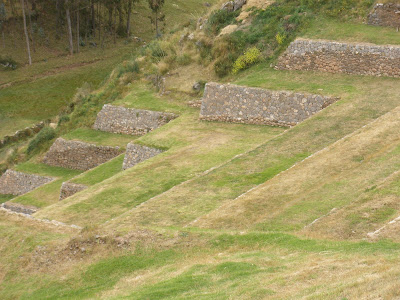As we mentioned in our last blog, we decided to do an "alternative" Inca trail...meaning we didnt pay $700-$900 for a 4-day trip. Ok our hike didnt pass all the same Inca ruins, but it was much tougher and more rewarding! Plus, we had seen quite a few ruins by then and were anxious to camp and hike and do outdoorsy stuff since the weather didnt allow us to do these things as much as we had hoped in Patagonia.
We begin our journey at a ripe time of 4:30am when the bus picked us up to bring us to the starting location. Silly us for thinking this was early! We actually got to take a nap on the bus and really started hiking from Mollepata at 8am.
Our first stop and beautiful view



Day 2, up at 5am, hiking by 6...this was our hard day - 11 hours of hiking total beginning with 4 hours up 1100 meters.

We begin our journey at a ripe time of 4:30am when the bus picked us up to bring us to the starting location. Silly us for thinking this was early! We actually got to take a nap on the bus and really started hiking from Mollepata at 8am.
Here are the donkeys caring our stuff....oh we worked so hard! (no but seriously we did later on)

We are all smiles at this point!

The first day was mostly on a road with as much up as down and flat....towards the end of the day we had our first glimpse of Salkentay

Day 2, up at 5am, hiking by 6...this was our hard day - 11 hours of hiking total beginning with 4 hours up 1100 meters.
Here we are before we start the hard part. As you can see, it´s much colder at altitude!

We zigzaged across the mountain til we were here....about half way up
Made it! We didnt climb over Salkentay but we were pretty close to parallel with it. As I mentioned, this mountain was one of the main sources of water for most of the Inca culture in the Cusco area and it was treated god-like. The Incas would carry huge rocks up with them and pile them as a form of offering. Although we are both in fairly good shape (ok one is a little more than the other) hiking at this altitude was pretty intense on our lungs!
















































